Shocking #SaveOurOutdoors campaign reveals climate change future at iconic UK locations
Provocative images of landscape hotspots aim to promote planet-saving activities of hikers, runners, climbers and mountaineers
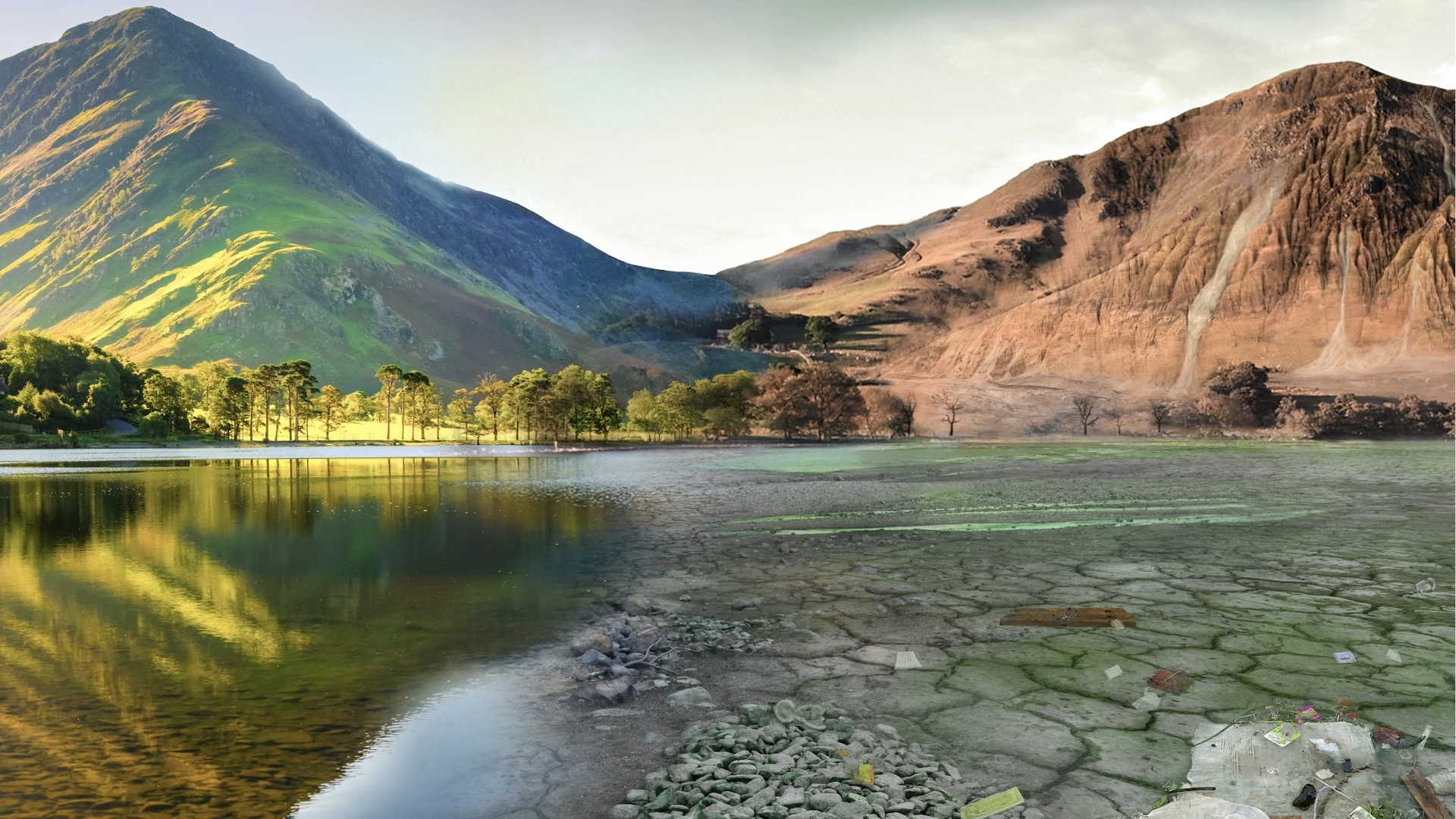
Cotswold Outdoor has launched a provocative new campaign #SaveOurOutdoors that reveals shocking images of the potential of climate change on some of the UK’s most iconic countryside locations.
In partnership with another retailer, Runners Need, and environment and conservation expert, John Howell, the photos of places such as Loch Ness, the Lake District, Snowdon and Sherwood Forest, show what they may look like in 50 years if we do not take action now to reduce our impact on the planet.
The issue of climate change is well recorded as being caused by human activities, such as the burning of fossil fuels, deforestation, waste and a growing population.
The United Nations underlines the climate crisis, reporting: “As greenhouse gas emissions blanket the Earth, they trap the sun’s heat. This leads to global warming and climate change. The world is now warming faster than at any point in recorded history.”
Images of climate change potential

Loch Ness, Scottish Highlands
The grass is parched and the ground is dry while trees are left decaying in the forests. With the peat covering the moors now drying out, there isn’t enough water to keep the streams flowing into the loch, resulting in water levels dropping each year. With the remaining water heating up, algae blooms and the number of fish depletes.
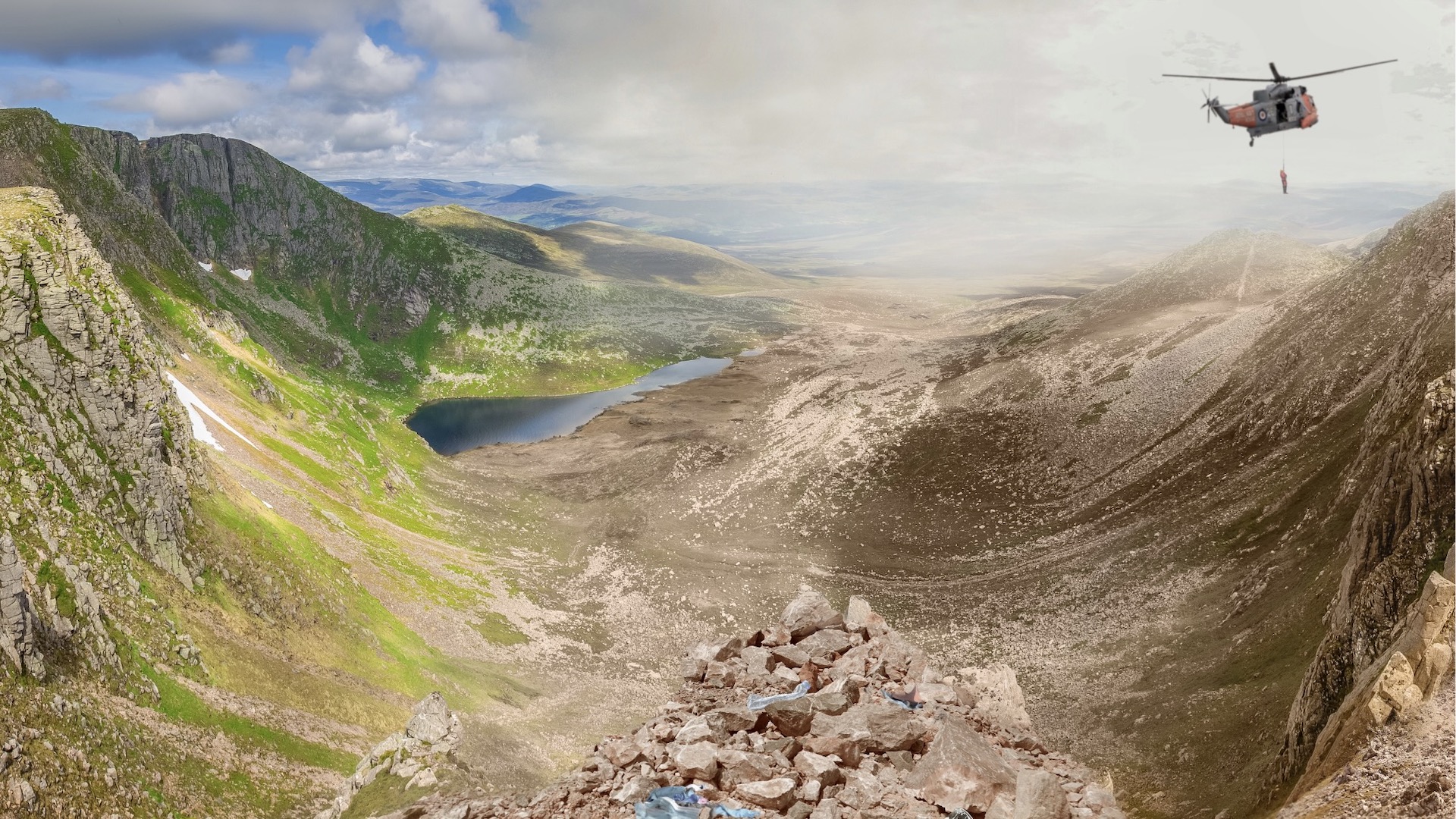
Cairngorms, Eastern Highlands of Scotland
All the latest inspiration, tips and guides to help you plan your next Advnture!
The rocky mountain crests now have little grass and heather, while bare peat between the rock oxidises and erodes, releasing stored carbon into the atmosphere.
The steep scree slopes lay open to run-off from intense rainstorms, leaving the small corrie loch half the size it used to be because of the excess scree washed in.
Because of the remoteness, the sight of helicopters evacuating people in danger becomes commonplace.
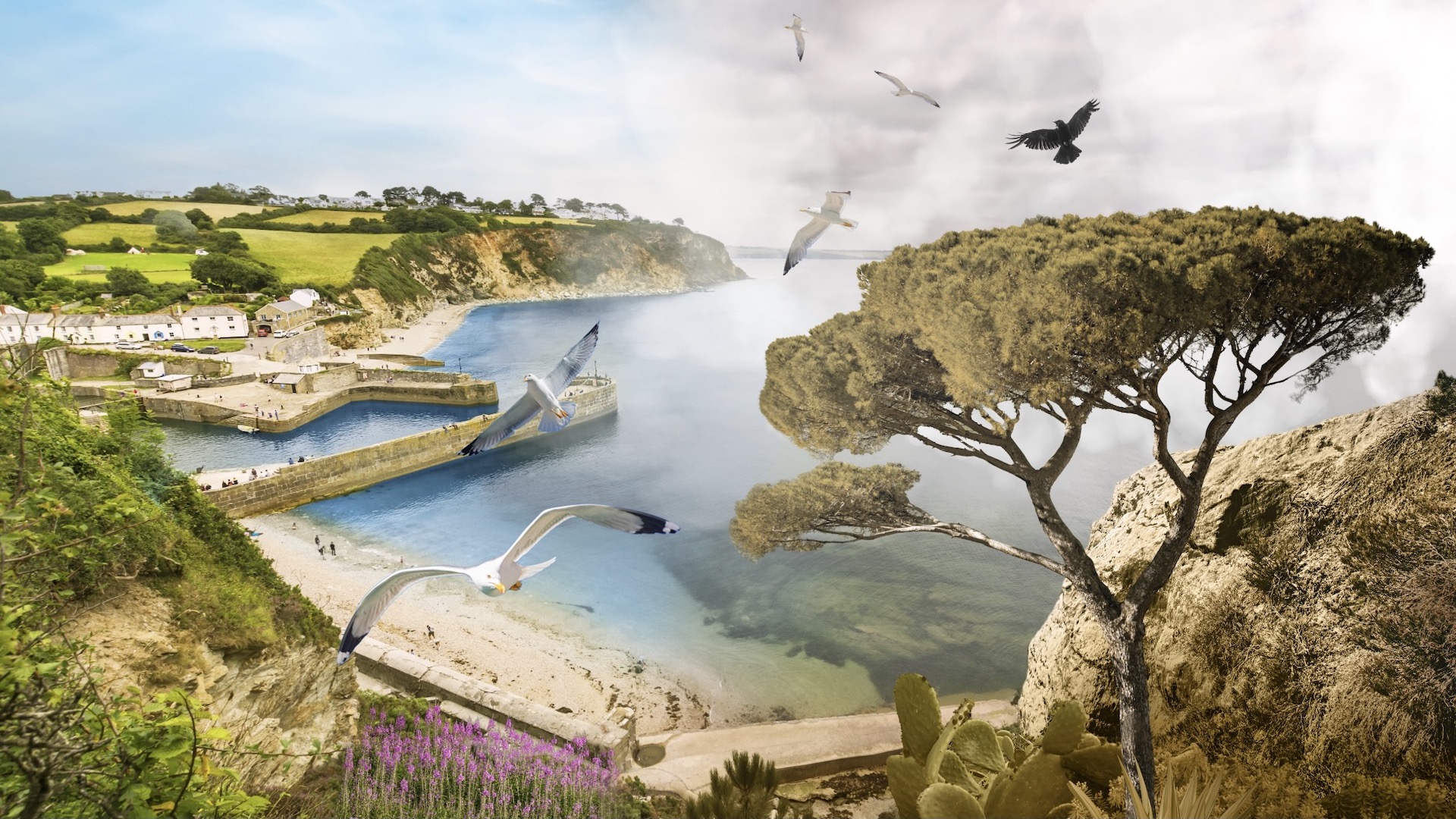
St Austell Bay, Cornwall
The global demand for China clay has caused the mines to expand closer to the coast, however, intense rainstorms overwhelm their settling ponds and send plumes of clay into the bay, which takes weeks to disperse.
The cliff vegetation has changed from lush and green to a landscape more recognisable in the Mediterranean.
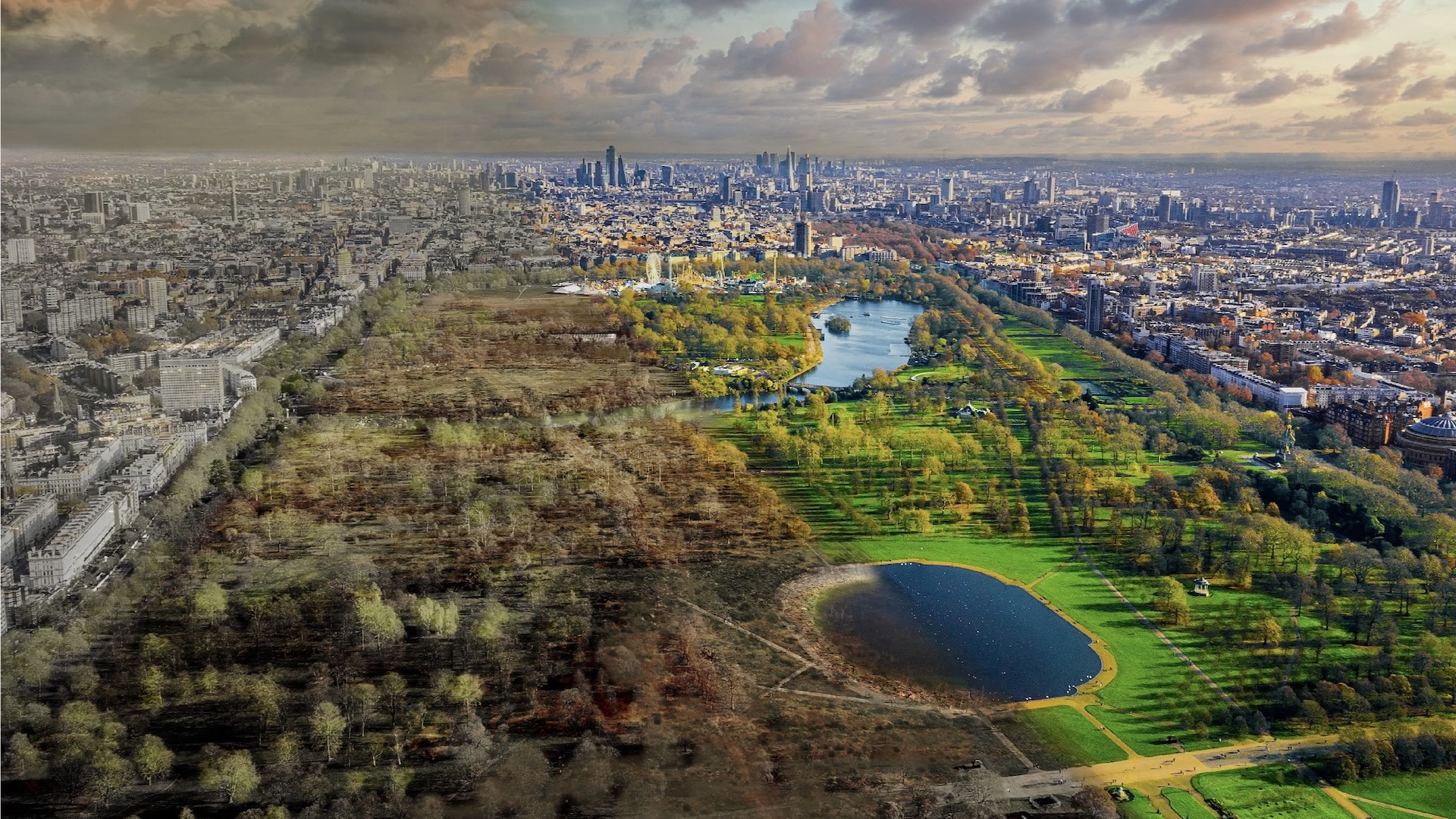
Hyde Park, Greater London
Repeated drought has left many of the trees slowly dying inside the park. Open areas are now dry and compacted from overuse, and flower beds are no longer vibrant. For half of the year, the Round Pond and Serpentine are almost dry and fringed by cracked mud.

Yr Wyddfa, Cymru / Snowdon, Wales
The top of the mountain has become more bare and heavier rainfall has caused gullies to activate on a scale not seen since the last glacial retreat, scarring the cliffs.
The lower slopes are now sparse without their grasses and dwarf shrubs. The footpaths are badly worn and Llyn Llydaw is no longer used as a reservoir because of the drop in water levels.
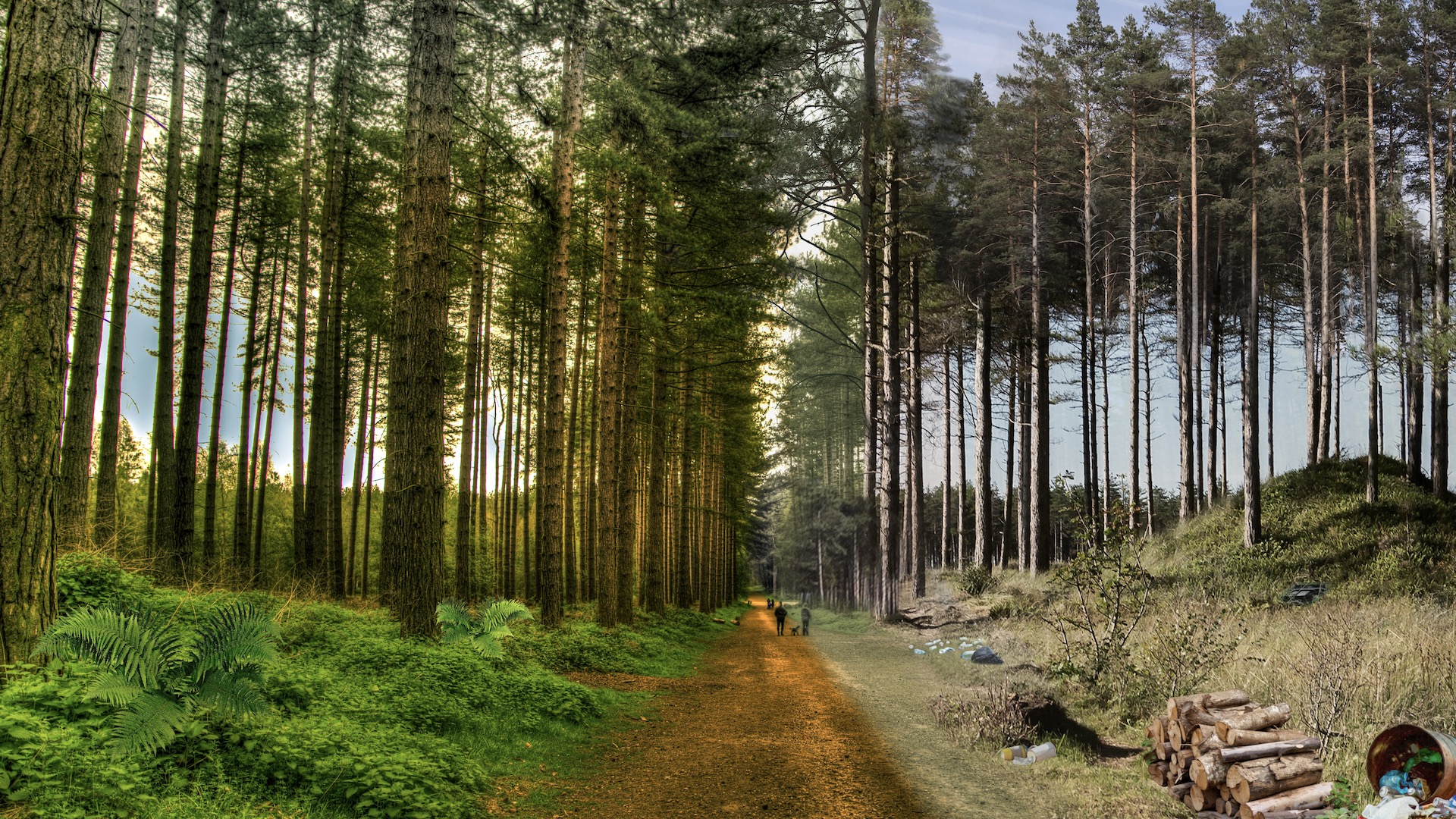
Sherwood Forest, Nottinghamshire
As this is a commercial woodland used to satisfy the country’s demand for pulp and timber, the Scots pines had to be replaced with Corsican pines, which are better suited to the warmer climate. They have almost settled and the canopy is starting to close.
#SaveOurOutdoors campaign
The #SaveOurOutdoors campaign was created after a survey, carried out by OnePoll on behalf of Cotswold Outdoor and Runners Need, showed that more than two thirds (69%) of people are worried about the impact of climate change on our landscape, with 58% looking ahead with concern to how our most iconic landscapes might look in five decades.
As well as highlighting what the future might look, #SaveOurOutdoors aims to highlight some of the actions we can each take to protect our favourite outdoors environments.
John Howell says: “We’re seeing an increase in extreme heatwaves, floods and other weather-induced events across the globe and we've reached a point where we can no longer ignore the impact our growing population is having on our planet.
“Many of the places we are so proud of in the UK have already started to change drastically and not in a good way. However, the signs of this are not yet obvious without careful study.
“That’s why these images are so important, as they show what these places could look like in the next 50 years if we don’t take action.
“As you will see, not only has rubbish built up drastically in our countryside and shorelines, but the lush greenery our country is known for has dwindled massively.
“Luckily, it’s not too late and there’s still a lot we can do, but we must all start implementing change now.”
What we can do: #SaveOurOutdoors tips
The campaign also highlights the importance of the Countryside Code. The survey showed that almost a fifth of people surveyed (16%) enjoy hiking and 8% go camping.
John offered some of his tips to help to reduce the individual’s impact when outdoors.
- If there is a paved path or track, stay on that, but if there isn’t avoid bare, muddy areas, as soil loss by foot erosion takes years to restore.
- Remember you might see your dog as a cuddly pet, but birds instinctively see a ruthless hunter, so keep your dog on a lead.
- Only camp in approved or designated areas (although in Scotland, it’s possible to wild camp so long you follow the Scottish Outdoor Access Code.)
- Put camping stoves and hot things on rocks and never on the ground.
- Bury your excrement and toilet paper at least 15cm down.
- Never damage any living vegetation, even mosses.
- Pass these messages on to others (politely) if they’re not following the Countryside Code.
- If you’re in a National Park, AONB or another area with a ranger service, call to report issues as soon as you see them.

Considering the part we can all play in protecting these spaces, Melanie Grünwald, head of sustainability at Cotswold Outdoor, says: “It doesn’t have to be a complete life overhaul, but if we all take some steps – for example, how we travel to our favourite outdoor spots, where we walk or dispose of our waste, how long we keep our outdoor kit for instead of replacing it – this all reduces our impact on the environment."
You can do you part by following the movement of #SaveOurOutdoors.

Fiona Russell is a widely published adventure journalist and blogger, better known as Fiona Outdoors. She is based in Scotland and is an all-round outdoors enthusiast with favorite activities including trail running, mountain walking, mountain biking, road cycling, triathlon and skiing (both downhill and backcountry). Aside from her own adventures, Fiona's biggest aim is to inspire others to enjoy getting outside and exploring, especially through her writing. She is also rarely seen without a running skort! Find out more at Fiona Outdoors.
